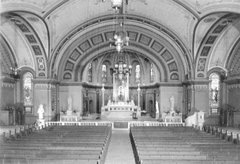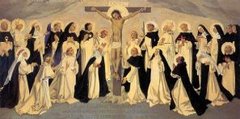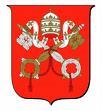 Space agency shows off imagery
Space agency shows off imageryby churning out prints
that are longer than a bus (AP)
Kris Capraro rolls up a photograph that was taken by the Opportunity rover on Mars and printed at the Image Processing Laboratory at NASA's Jet Propulsion Laboratory in Pasadena, Calif.
Today’s technology is a far cry from 1965, when scientists actually used crayons to color tiny strips of paper to create Mars photos. Their crayon color choices were based on long strings of digits representing the 21 pictures transmitted by Mariner 4.
Ha! by 1978 when I started working in image processing, using the NASA ILIAC supercomputer at Moffett Field, California (which we connected to by a 150 baud acoustic coupler modem), we had wide carriage printers and felt tip pens! We could print 7 foot strips of 14" wide paper, color them (earned $4.25/hr to breath felt pen fumes for hours), and then hang them on the wall taped together side by side, to "see" our pictures!"
By 1983 I'd been writing GIS and image processing software based on JPL's VICAR (Video Image Communications and Retrieval), an IBM 350 mainframe programming environment, and converting them to 16bit minicomputer code with primitive line printer and dumb terminal graphics. A bit of a prima-donna in that geekish world, I was hired by the Multi-Mission Image Processing (MIPL) division at JPL in 1983, my "Mecca." my playground became:
to this "Mecca" I moved to do my part to bring about "1984", and I was known at work as the "Famous Potato" because of my Idaho plates on my 1961 Fiat 1200 sedan that I commuted to work in.

(Hey, that's the best picture I could find!)
Anyway, I did my (miniscule) part to bring image display, the PIXEL, into your life, (a dubious addition to your life?) I hope I don't have to spend too much time in purgatory for it...
And 1984? well, that project is still underway, we've all brought it much closer to completion, albeit behind schedule.
hat tip to A Brief History of ‘Pixel’
(hey, I still have ref#52!)





















That's, um, interesting.
ReplyDelete'Cause from June-December 1983, I worked in MIPL as a co-op student, running VICAR routines to pseudo-colorize SIR-B images.
I even wrote a song about it, sung to the tune of "Sir Duke."
MIPL is a world within itself,
With a language no one understands.
But when Jerry tells us, "Process this,"
We all listen close to his commands.
Etc.
There are prints of those SIR-B images hanging in my hallway.
(I went back to JPL after grad school, working down the hall from the image processing group for about 7 years, until 1996.)
That is, June-December 1984.
ReplyDeleteTom,
ReplyDeleteI guess we can sing "It's a small world after all!"
We might have crossed paths, I started in the spring of '83 and left in Dec 84. The gentleman who hired me (sorry that I've forgotten his name, but he did the geology image processing research) passed away between the time I was hired and the time I showed up. When I arrived, it was an odd moment of, what to do with this guy? I was put under Dave Nichols on the ASAS-ENSCE project (boondogle?) and given the for man-machine interface "lab." I took Ken Castleman's course, but as I'd been sucked into stuff I didn't care much for and as the reason I'd gone there for was gone, I didn't stay. Lived in Montrose just up La Crescenta from the lab.
I managed to stay in touch with Lee Johnson for several years, he went to TGS after JPL and I lost track of him. Bob Mortensen worked for me, and his wife Helen was at the Lab (mini-Vicar) for quite a few years later. Tony Morse, who had been TGS, took my position at IDWR where I'd started under the PNRC grant when we started the Idaho classification using VICAR. I worked some with Tom Logan, and tried to hire him after I left. There was a women from JPL I successfully hired from that group, but I've forgotten her name; it may come to me (most of the names are almost there, but not quite).
Liked Neville's work before I went there, but never got close to him once there. Loved meeting the old gent who ran the original wind tunnel on the DC3 models hanging upside down from spring scales.
I learned a lot of interesting things there, one that really stuck with me was at the conclusion of the massive conversion of VICAR from the IBM mainframe to VAX 11-780; after the project was completed and IBM was told that the $1.5M/yr lease would be canceled, IBM responded with "For $50K you can have it." They were told to remove it immediately, and there was a bit of embarassment over justification of a conversion that not eveyone seemed pleased with.
Another was a fellow who I was discussing the conversion with; I said, don't you want to see your results immediately, instead of awaiting the card deck batch job to run? His response, utterly timeless, was: "if it's worth doing, it's worth waiting for."
I am in the process of moving, and just this weekend I finally dumped my old VICAR manuals and 9track tapes. I wrote some cool software that utilized image processing hardward to do things like minimum distance classification, box car filtering, free-form digitizing, and map projection transformations, but all that was another life.
working nostalgia aside, the first liturgical church I ever went to was the Episcopal Church in La Canada; the homily was titled "Not a bad show for a buck." An interesting introduction!
ReplyDeleteWell, there we are, then. I co-oped for Jerry Solomon, but was hired full-time in '89 to work in the Cartographic Applications Group, with Tom Logan and Lee Johnson, on ASAS.
ReplyDeleteToo amazing. Was Lisa Wynn still there when you came back?
ReplyDeleteYes, but I don't think we ever worked together.
ReplyDeleteYikes, I don't know which is stranger: finding out that we both worked in MIPL at the same time; or realizing how little I remember of my years in California.
It is strange to discover the holes in the memory (more immediately disconcerting than the hole in the Ozone!).
ReplyDeleteI have a vague memory that the MIPL staff in 1984 was around 120? There were a lot of folks; and a lot of young guys working on display screens doing more fun stuff than I was working on. my "office" was in a trailer outside the building on the north side, we had Otrona portables with CPM, but I was still pushing pencil in those days, and "cut and paste" was, well, scissors and tape.